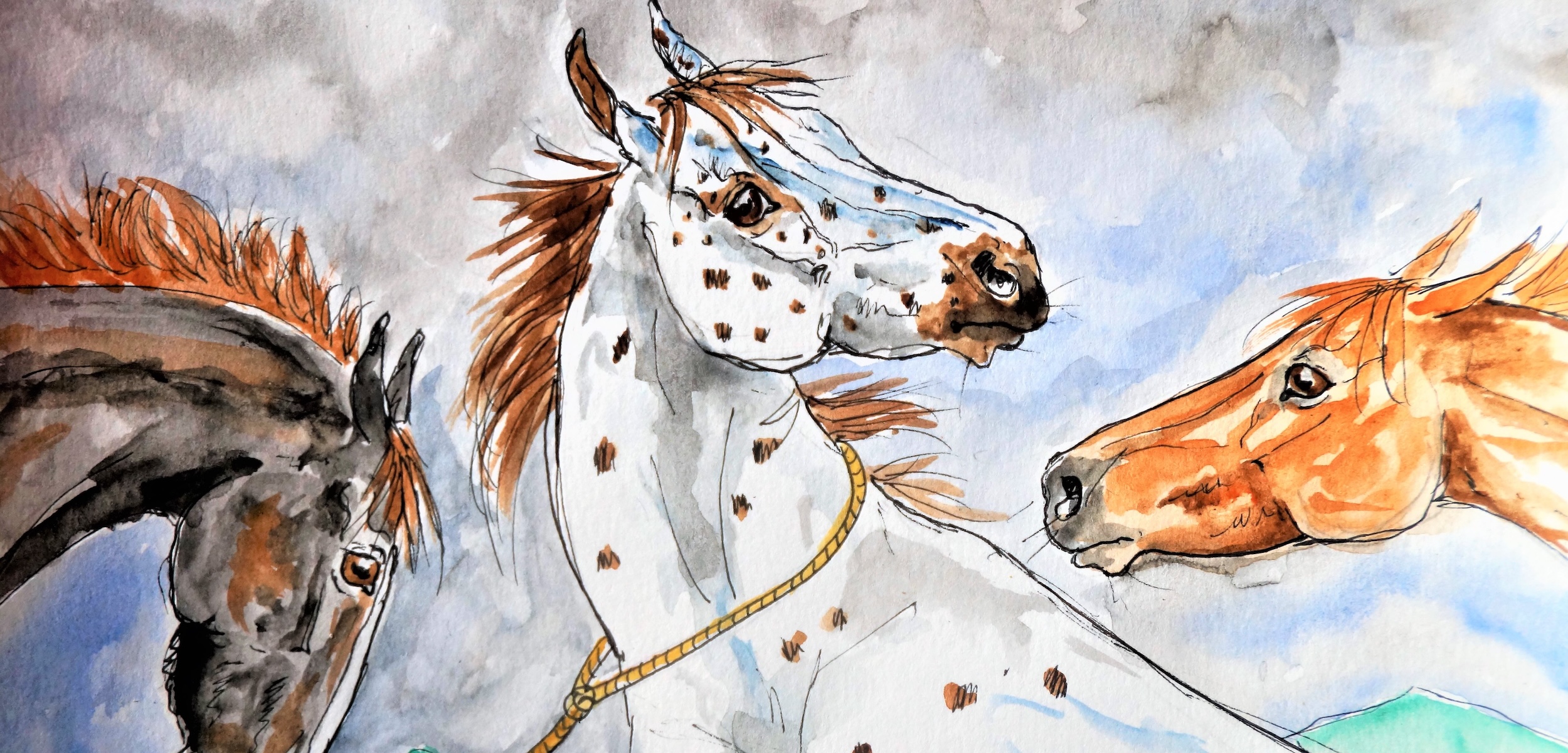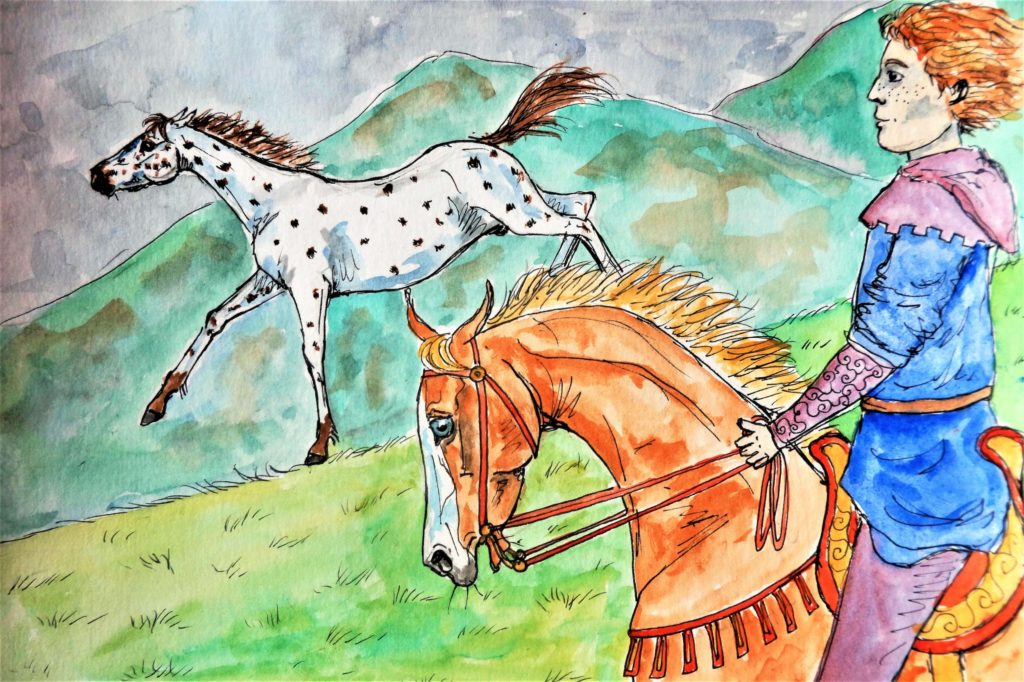
Posted by Edward Mills
10 March 2025If you’re working on your PhD at the moment, you’ve probably grown sick of the eternal question: ‘have you thought about publication yet?’. There are many avenues for publishing and sharing your research, some of which have appeared on this very blog, from traditional edited collections and critical editions to more modern outfits such as podcasts, social media, television consulting, and even cartoons. At last week’s ‘Life After the Doctorate’ workshop, though, postgraduates at the Centre learned about a less common outlet for doctoral research: namely, picture-books! Camille Vo Van Qui, who recently completed her PhD at Exeter, shares her experience adapting her thesis for an altogether different audience.
As I was busy writing up and editing in the run-up to the submission of my thesis, I started to feel a bit fatigued. I loved my topic — the breaking-in of (war)horses in medieval France — but I had been working on it since my Masters’s degree and I was just getting a bit tired. Not of the subject itself but of the whole process — especially when it came to the soul-sucking part of checking references and formatting them. It is then that I decided to concretise a project that had been at the back of my mind for years: turning my thesis into a picture book.
Why? Well, the first reason is that I love drawing and it is my way of unwinding, so I would be able to relax while still reflecting on my topic. The second reason was that if I managed to turn my dry, academic thesis into an accessible picture book, I’ll be able to share it with the people around me who had no desire to read the entire thing (only one family member did!) but were still interested in the topic, because … horses.
So I got to work, in the evenings, or whenever I needed a break. I first wrote a little story about how a medieval horse would have experienced the training, from his own point of view. This fitted in with one strand of my research, linked to the field of animal studies, the goal of which was to make animals agents of history, rather than simple objects in an anthropocentric perspective. I was helped in that matter by the fact that I had tested some medieval training techniques on real horses. Because of that, I had a good idea of their potential reactions. Initially, I was going to simply write a simplified version of the thirteenth-century training method I was working on, describing the different stages used to tame the horse, but I soon realised it needed more to be interesting to the readers, which is why I centred it around the equine character.
My goal was to write a compelling story that would be historically accurate as well as a good reflection of how a real horse would behave. And that’s how I came up with Moscat, which is simply the story of a fourteenth-century horse, raised, tamed, and trained following the instructions found in Jordanus Rufus’s thirteenth-century treatise. I set my story in the South of France and gave the horse a name which, in medieval Occitan, refers to his colour (spotted, or literally “covered in flies”.). This was influenced by the fact that one of the manuscripts I was studying and transcribing was written in that language. At the end of the book, I added a small write-up about the historical sources I used.


It was a fun project which I then self-published, using Amazon’s Kindle Direct Publishing platform, which is completely free to use and allows authors to buy copies of their book for the cost of printing. This enabled me to gift books to my family, giving them a better idea of what I was working on. Some people (friends who had seen my posts on social media and strangers) actually bought copies: I made enough in royalties to buy myself a coffee. I also sold a few books at local markets, which gave me an opportunity to discuss my thesis with the general public. This made me realise that making my research accessible to a wider audience was something that I really wanted to do and, more recently, prompted me to start working on a trade publication. Feedback on the book was kind (though no one told me I had made a couple typos, including a horrible one that meant a sentence made no sense and that I only noticed months later…). That means that my family and friends said they liked it and I heard nothing from the strangers.
Overall, this was a very positive experience that made me approach my thesis in a different, more creative manner. It also helped me to develop a number of skills, including presenting the essence of my research in an accessible manner and learning about book formatting. There are many other ways of doing this, such as writing for a popular magazine or using your research to write fiction, but the advantage of a picture book is that it can be used to target children and (hopefully) inspire younger generations to take an interest in history. I wrote the book I would have wanted to read as a horse-crazy child with an interest in the Middle Ages and, by doing so, I came back to the roots of what my research truly meant for me.
Camille’s book, Moscat: The Young Years of a Medieval Horse, is available on Amazon (along with a French version).